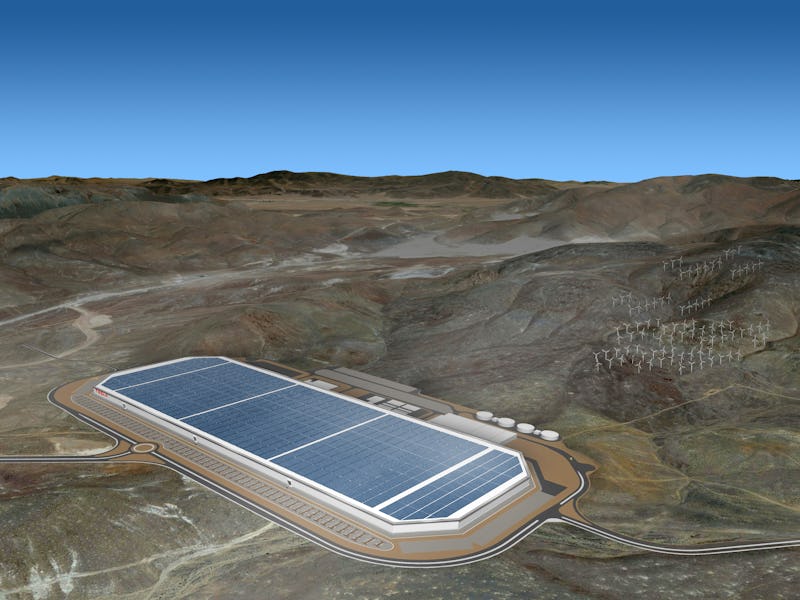Tesla has four more Gigafactories planned: Here's what we know
Tesla is set to expand its production dramatically, with new factories around the world. Here's what to expect.

Tesla is building factories around the world as part of a plan to massively increase productivity and transform energy usage. Never a company to think small, some of these factories were once known as "gigafactories." More are planned, and competition for these factories across the globe has proven to be fierce.
Over the weekend, CEO Elon Musk declared that the company would build a second Gigafactory in Asia, following Giga Shanghai that handed over its first cars in January 2020. In response to Twitter user "spaceguy_24," who asked "Will you expand Tesla mega factories in Asia outside China," Musk wrote:
"Yeah, but first we need to finish Giga Berlin and a second US Giga to serve eastern half of North America"
The electric car company is building more factories all over the world for two reasons. The first is to simplify the production process: Musk explained in February 2020 that a factory on each continent would mean cars could reach consumers faster, cars would have less distance to travel, and each facility could focus on meeting legal criteria for fewer territories. The second is it increases production, reaching closer to "terawatt-hour" battery production levels that Musk said in July 2019 will "really make a fundamental shift in the world’s energy usage."
First, a quick primer. Tesla currently operates three facilities with the term "Giga" in the name:
- Giga Nevada, previously known as the "Gigafactory." This facility came after the Tesla factory in Fremont, California that once belonged to General Motors. Giga Nevada started producing batteries in January 2017.
- Giga New York. This facility, located in Buffalo, started producing Solar Roof tiles in August 2017.
- Giga Shanghai. This facility started producing Tesla Model 3 vehicles in January 2020. It's expected to produce 500,000 Model 3 and Model Y vehicles per year when it reaches full capacity.
There are a further four potential future facilities, ranging from under construction to more vague rumors.
Musk handing over Tesla vehicles at Giga Shanghai.
What about the pollution? – Shifting the world's energy usage is great, but will these facilities pollute as well? Tesla's 2019 impact report described factory emissions as "an important part of lifecycle emissions," but also noted they're "a relatively minor portion." A February 2018 report from the International Council on Clean Transportation concluded that an average electric car is 30 percent cleaner than an internal combustion vehicle over its lifetime.
The ICCT's report also noted, however, that electric vehicle production produces more emissions than traditional car production. After two years of ownership the EV starts to outpace the traditional vehicle in terms of emissions savings. It's clear that Tesla's goal of reaching 100 percent renewable energy across its operations could make a big change toward the environmental question of owning an electric vehicle.
As Tesla increases its production lines, these questions will come to the forefront again. Here's what we know about future projects, and their status:
Giga Berlin – Musk announced this one in November 2019, and the ground was broken in June 2020 after a three-month delay. Similar to Shanghai, this facility is expected to produce 500,000 cars per year for nearby markets. It's expected to start producing cars in July 2021.
The Tesla Model 3.
Giga Central U.S. – This facility is expected to help support the eastern North America market. This would help produce more Model Y vehicles, as well as the Cybertruck set to hit roads in late 2021.
In May, AP reported that Tesla had narrowed it down to Austin, Texas and Tulsa, Oklahoma. The Verge reported in June that, at a public meeting in Austin, senior global director of public policy Rohan Patel said the firm had solicited offers from "nearly every state and governor East of the Rocky Mountains." The firm faced notable backlash from members of the public at the meeting, particularly around worker safety and Musk himself.
Giga Asia – Perhaps the vaguest at this stage, but one that's been confirmed by Musk. Little is known about where Tesla may place this facility, but there are some clues. Reuters reported in July that LG Chem will start producing batteries in South Korea for Tesla, alongside its existing facility in Nanjing, China. Tesla's partner Panasonic also produces batteries for the firm in Japan.
A facility close to existing production lines could be a smart move. As Musk's post suggests the factory would be outside China, which would leave South Korea and Japan.
Giga U.K. – Perhaps the least likely of the four, as Musk has never publicly acknowledged such a facility. Musk said in a November 2019 interview that issues around Brexit made a British factory too risky. The country left the European Union in January 2020, entering a mutually-agreed transition phase.
Last month, Property Week reported that the British government was looking for four million square feet of industrial space for electric vehicle research, development, and manufacturing plant. One rumored location was Somerset’s 650-acre Gravity industrial park. Tesla was reported as having links to the search.
The rumor was bolstered last month by a report in The Times that Musk's private jet was stationed at Luton airport on June 3 while he toured the Gravity site. The jet left the airport again 19 hours after landing.
The move could make a lot of sense in terms of simplifying international production lines, as it would be the first Tesla factory located in a right-hand-drive territory.